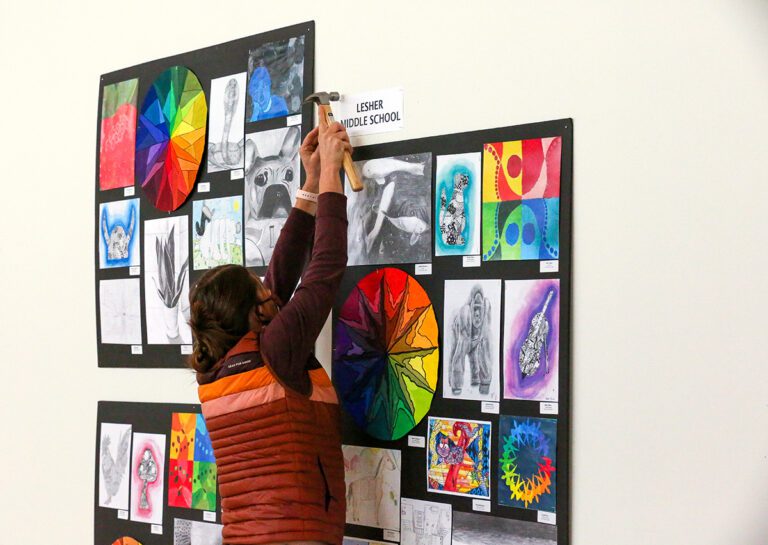In my years as a TAB educator, I’ve heard it all. My classroom is amazing or my classroom is chaotic. People love the work or people, well, don’t. Many tears have been shed and soliloquies made after an off-hand comment cuts down all the work being done by students.
Shifting expectations for student artwork can be challenging, and sometimes threatening, to parents and administrators. Remember, their concern comes from the same place as yours: wanting what’s best for the students.
Here’s some advice I have for you if you have or want to shift to a process-based classroom.

Invite parents and administrators into your room.
You know what it looks like when students collaborate and problem-solve. You’ve seen them struggle and have “ah-hah” moments. Frustration leads to moments of magic. Don’t be afraid to invite parents and administrators into your classroom to experience what you see every day. Most people LOVE to see the authentic learning and engagement. And if you have someone who doesn’t understand, this is not the end of the world. We can’t convert everyone!
Get students writing and talking about their work.
When I’m at a museum, one of my favorite things to do is read about the artwork I’m viewing. It gives context and meaning to enhance my experience. Getting your students to create artist statements about their process can have a three-fold effect: It gets kids to reflect on their own process; it creates the opportunity for other students to share in that student’s process, and lastly; it can be a lens adults can use to examine student work.

Some of my students love to write about their process and artwork. Some of my students prefer to explain their work verbally. Being a scribe for younger students is a great idea, but even older students benefit from being able to explain their work verbally. Either way, the insight artist statements provide will amaze you.
Arm yourself with knowledge.
Join online PLC’s and start reading (or listening) about learner-directed classrooms to arm yourself with the knowledge to respond to skeptics. Confidence is key! If you are able to easily recommend a book, article or reference explaining why your process-based philosophy gets kids thinking, you’re more likely to make a convincing case. One of my current favorites are the process-based podcasts created by AOE’s own process guru, Andrew McCormick!
You may want to take the time to write down a letter of intent or mission statement for your classroom. This is something you can keep in your desk to motivate you through tough times or you can even share it on your website or classroom entrance. Either way, get your philosophy on paper.
Let Go!
At the end of the day, focusing on process vs. product is not easy, but I have found it is always worth the struggle. Allowing your kids to have power over their own learning and keeping your expectations kid-centered (and not adult-centered) will eventually yield amazing results. Let go of making everyone happy and keep in mind for every negative comment you receive, there’s a slew of positive comments that never made it to you!
Do you have a process-centered classroom? What does it look like?
Have you ever felt defeated by a negative comment or uplifted by a positive one? Share your experience in the comments below!
Magazine articles and podcasts are opinions of professional education contributors and do not necessarily represent the position of the Art of Education University (AOEU) or its academic offerings. Contributors use terms in the way they are most often talked about in the scope of their educational experiences.






